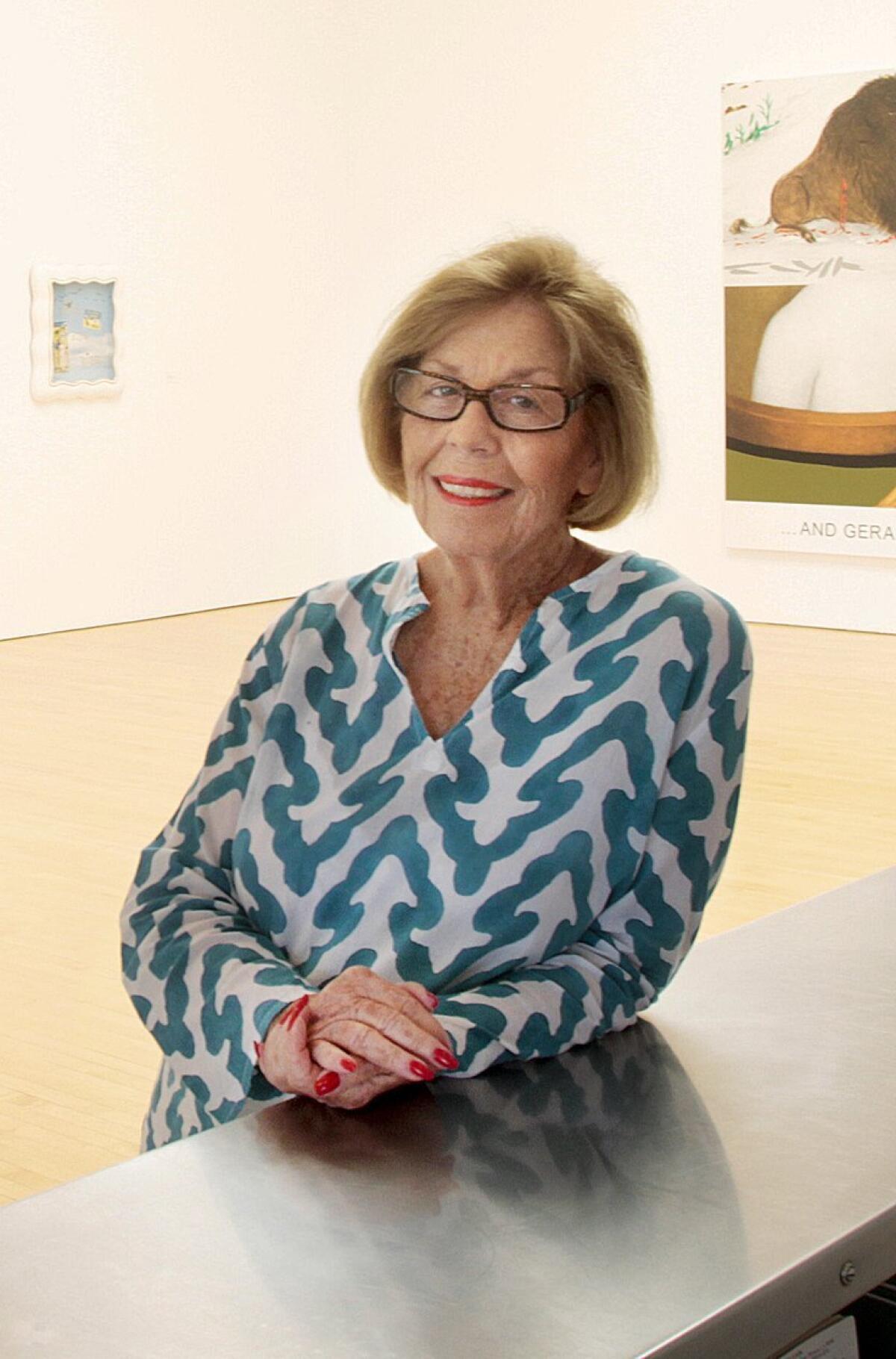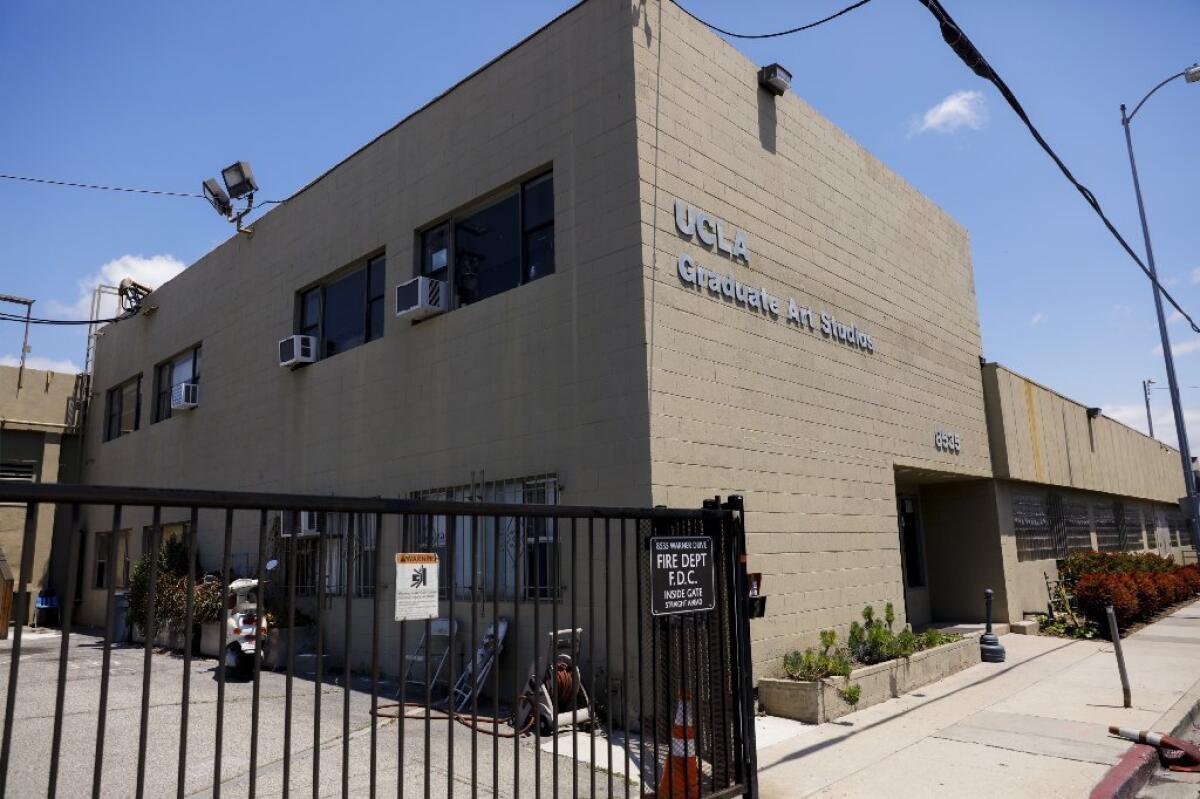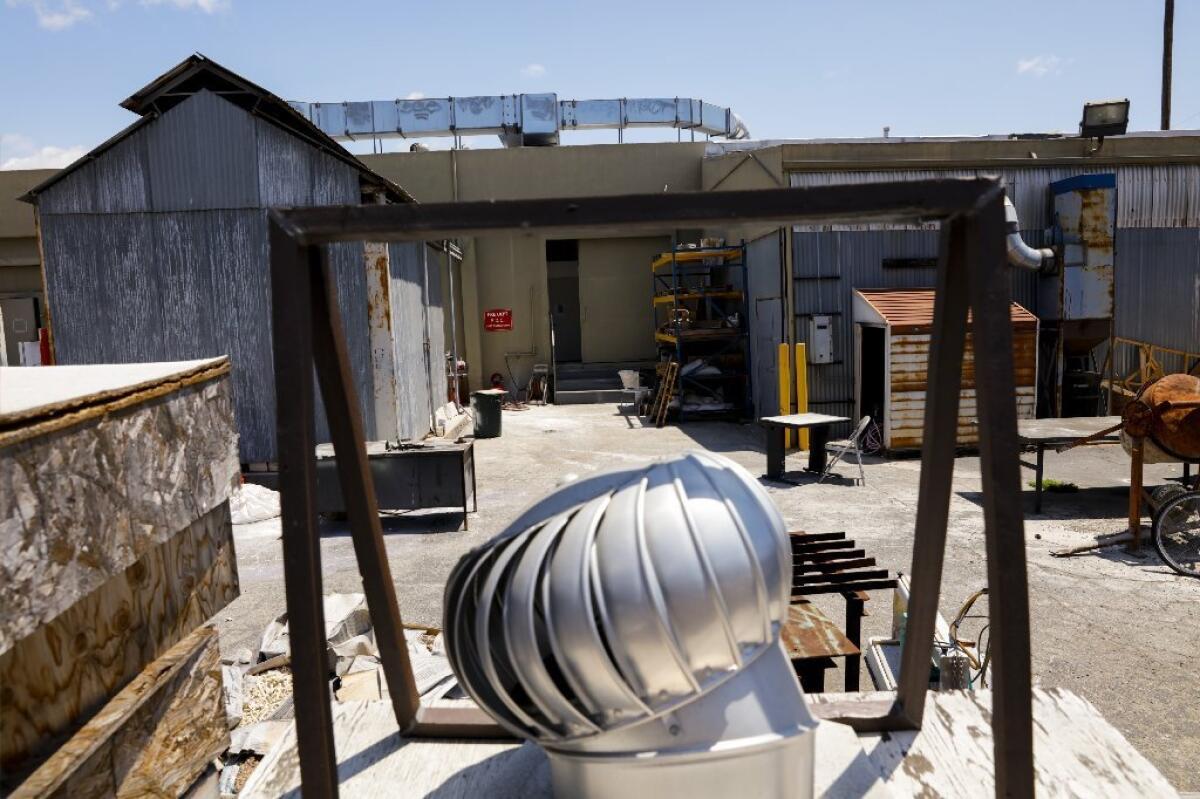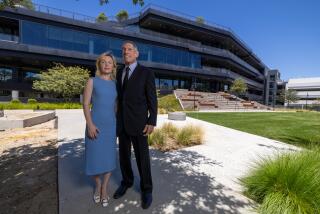UCLA’s art school plans to build a $31-million expansion in Culver City with major donation
In today’s art world, galleries and museums tend to draw the lion’s share of public attention. But art schools are a primary if less heralded source of steady renewal for the city’s cultural life.
That’s what makes the unveiling Thursday of an ambitious proposal by the UCLA School of the Arts & Architecture, aimed at strengthening the city’s sprawling artistic infrastructure, so important.
The university is in the late planning stages to build a $31-million studio complex for graduate art students, according to people familiar with the project. The 75,000-square-foot building would replace a tumble-down facility currently in use. The impressive plan, set to be shown Thursday to a group of university supporters, was conceived in 2011 but languished for lack of funds.

Major funding for the project will come from Margo Leavin, the art dealer whose eponymous gallery held forth in West Hollywood for 42 years until her retirement in 2012.
The size of Leavin’s proposed donation has not been disclosed, and UCLA declined to confirm the plan. Sources familiar with the project peg her gift at
$20 million.
Reached by telephone in New York where she is traveling, Leavin, who turned 80 last month, said her decision to make the generous pledge evolved slowly after she and business partner Wendy Brandow shuttered the Margo Leavin Gallery.
Artists are the backbone of the community, so I wanted it to be something that would have a real impact on that.
— Margo Leavin
While she was organizing her business records and other papers, an extensive archive acquired last year by the Getty Research Institute, Leavin said, “I began to realize that I could also make just one significant bequest. Artists are the backbone of the community, so I wanted it to be something that would have a real impact on that.”
A New York native, she added that giving back to the city where she had her business success was also essential. The languishing UCLA project satisfied both concerns.
The timing is ripe. Earlier this year, U.S. News & World Report ranked UCLA’s master of fine arts program No. 2 in the nation, just behind Yale — a private university with the second-largest endowment in the United States. UCLA’s art school tied Virginia Commonwealth University, notable for its design program.
It also edged out the School of the Art Institute of Chicago and the Rhode Island School of Design, both private institutions affiliated with important art museums. The stellar ranking catapults the art school into the top slot among all UCLA graduate programs, according to a university spokesman.

A feasibility study to replace the ailing current studio building was commissioned more than five years ago by the art school’s advisory board, which includes former Getty Trust Chairman Harold Williams, philanthropist Eli Broad, record executive Mo Ostin, Activision executive Eric Hirshberg and 15 others. Prompted by former UCLA department chair Russell Ferguson, the Los Angeles architectural firm Johnston Marklee & Associates was selected to develop a building plan and model.
For lack of funding, however, their enthusiastically received proposal did not move forward.
Leavin, an alumna of the university, said she had long made modest donations to the school. Several prominent artists she represented at her gallery, including Conceptual art pioneer John Baldessari and narrative collage artist Alexis Smith, also had ties to UCLA as faculty or students.
Perhaps most important, she understood the critical if inadequately acknowledged history that art schools have played in the astonishing growth of the city’s artistic reputation since the 1950s — from backwater to dynamo. Today, L.A. is the principal American heir to a strong European tradition, especially in Germany and Great Britain, in which important artists also teach.
As Los Angeles exploded in the immediate aftermath of World War II, the city could claim only a weak gallery system and barely any significant art museums. Public and private art schools, independent or at local colleges, anchored the nascent postwar L.A. art scene.
Communities of artists grew up in and around them. Their exhibition spaces filled an essential role for showing art. Only later would the need be met in
a sustained way by com-
mercial galleries and museums.

Infrastructure might not be glamorous, but it is essential. Without it society cannot operate, civilization slumps. CalArts, Art Center, Otis College, Claremont and others have been fundamental to L.A.’s emergence over the last quarter-century as a powerhouse for new art.
At UCLA, the stature of the program stands in stark contrast to the shabbiness of the existing facility.
“I was shocked,” Leavin said of her tour of the site last summer.
Affectionately nicknamed “Warner Studios” for the street corner outside, the complex is built around a large, ramshackle warehouse in the heart of Culver City’s Hayden Tract, a former industrial zone. Several makeshift additions have been tacked on over the years. The facility’s inadequacies stand in glaring contrast to the school’s stellar reputation.
Studio space for students is dark and cramped, and ivy grows up inside the walls. Unventilated interiors broil in the warm months, and the roof leaks.
Among UCLA’s internationally known faculty are painter Lari Pittman, installation artist Barbara Kruger, photographer Catherine Opie, interdisciplinary artist Mary Kelly and ceramic sculptor Adrian Saxe. But they have no studio, office or classroom space in the building.
Johnston Marklee’s plan is to raze the ad hoc additions, refurbish from top to bottom the central bow-truss warehouse building and wrap it on two sides with a new, two-story structure. A translucent, polycarbonate roof creates an elevated canopy that bathes the interior with light and air.
Architect Sharon Johnston likens the layout to “a mini-city” anchored by a dramatic, covered entry portico.
“A key aspect was that there would be a casual, undetermined quality to many of the spaces,” Johnston said this week, describing the layout as a group of interwoven “neighborhoods” for independent work, collaboration, teaching and social interaction.
Individual studios will accommodate at least 45 students. There are also common areas, classroom space, an apartment to host visiting artists, a gallery and a communal kitchen and garden.
Renderings and a model are characterized by a handsome, workaday ambience, rather than setting a flashy tone.
The building is Johnston Marklee’s second cultural project in the United States. Their low-slung design for the Menil Drawing Institute, a free-standing museum addition currently under construction in Houston, is eagerly anticipated.
If all goes according to plan, ground will be broken for the UCLA project next year. Completion is targeted for the university’s 2019 centennial celebration.
ALSO
Woody Allen says he’s done hiding behind comedy
Hyperloop One succeeds at first of many much-hyped tests
From coast to coast, middle-class communities are shrinking
More to Read
Sign up for Essential California
The most important California stories and recommendations in your inbox every morning.
You may occasionally receive promotional content from the Los Angeles Times.











